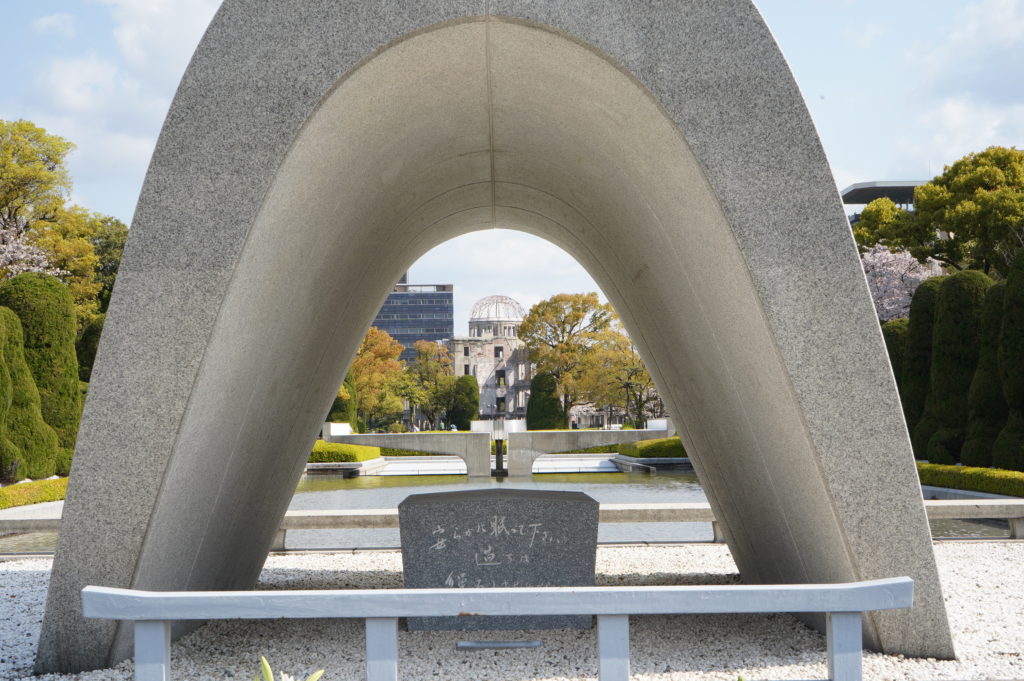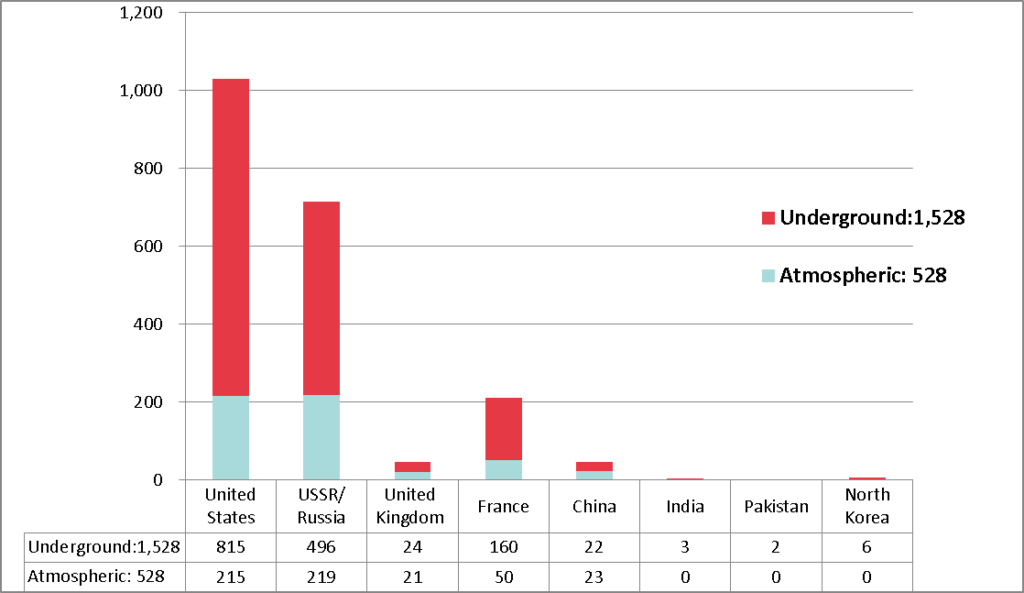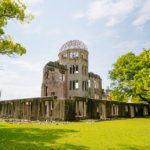International Day against Nuclear Tests
August 29 is the international Day against Nuclear Tests. It commemorates the closure of the Semipalatinsk Nuclear Test site on August 29, 1991. The Semipalatinsk Nuclear Test site was the largest nuclear test site in Soviet Union and conducted 459 nuclear tests (26 aboveground, 87 air and 346 underground)from 1946 to 1989[i]. Due to nuclear tests, there are not so few people who were sacrificed or suffered. In this article, we introduce nuclear test including the number, impact and international framework.
[i]Hiroshima Peace Science, A Full-text Japanese Database of Testimonies of Those Exposed to Radiationnear the Nuclear Test Site of Semipalatinsk, Kazakhstan, 2003, https://home.hiroshima-u.ac.jp/heiwa/JNL/25/kawanoetal.pdf

The number of nuclear tests
The US conducted the first detonation of a nuclear weapon on July 16, 1945. In less than a month, the atomic bomb was dropped on Hiroshima on August 6 and Nagasaki on August 9.
After that, the number of Nuclear-Weapons States is increasing and until now China, France, Russia (Soviet Union), UK, US, India, Pakistan and North Korea conducted at least 2,056 nuclear tests. Israel that has consistently pursued the policy of “nuclear opacity” has not officially announced to conduct the nuclear test. The nuclear tests were conducted not only Semipalatinsk but also dozens of test sites including Lop Nor in China, the atolls of the Pacific, Nevada in US, Algeria. The test sites are usually far from the capitals of the Nuclear Weapons States.

The number of nuclear tests
The graph was made based on the nuclear testing tally., Arms Control Association, https://www.armscontrol.org/factsheets/nucleartesttally
The number of nuclear tests by the United States does not include atomic bombings of Hiroshima and Nagasaki.
Impact of Nuclear Tests
Hiroshima University for peace science conducted a field research in Semipalatinsk and related areas on July 2002 and released the report, “Report of the actual conditions of the radiation exposed residents near the former Semipalatinsk nuclear test site”.
The testimonies by habitants are listed on the report.
- We did not know anything about the harm of nuclear tests. I swam in the lake created after the nuclear tests. All my illness today are due to nuclear tests.
- The ground shook during the nuclear tests. I closed the chimney and curtains. I was ordered to lie on the ground. The memories of that time are terrible, I do not want to remember. Don’t let the next generation see this test.
International framework regarding nuclear test
There are two international frameworks, one is Partial Nuclear Test Ban Treaty (PTBT) and the other is Comprehensive Nuclear-Test-Ban Treaty (CTBT).
The PTBT did not prohibit test detonations of nuclear weapons conducted underground. Thus the effectiveness to deter the nuclear development by nuclear-weapons states is limited. On the other hand, CTBT prohibits “any nuclear weapon test explosion or any other nuclear explosion” anywhere in the world including the atmosphere, underwater and space. However, the CTBT has not entered into force yet because some countries including China, Egypt, Iran Israel and the US have not ratified.
Detail: https://hiroshimaforpeace.com/en/ctbt/
The five Nuclear Weapons States (China, France, Russia, UK and US), India and Pakistan maintain a moratorium on nuclear test explosion until CTBT will enter into force. North Korea, at the Plenary Meeting of the Central Committee of the Workers’ Party of Korea on May 20, 2018, decided to withhold nuclear and ICBM testing, and shut down its Punggye-ri nuclear test site. Since this announcement, North Korea has continued not to conduct nuclear test explosions. However, it is not clear whether or not the nuclear test site was irreversibly destroyed[i].
Initiative by Hiroshima Prefecture
Hiroshima Prefecture protests any nuclear test including test without nuclear explosion. Once we find out that the nuclear test is conducted, we send the protest letter to the government.
Protest letters (Only Japanese is available)
https://hiroshimaforpeace.com/abolition-of-nuclear/effortlist/
[i] Hiroshima Report 2020, https://hiroshimaforpeace.com/en/hiroshimareport/report-2020/page-11/
Information related to this page
Hiroshima Report
Hiroshima Report has analyzed and evaluated the status of efforts in each country toward nuclear disarmament. By disseminating this report to the country and showing the status of each country’s efforts toward nuclear disarmament, we expect that the process of eliminating nuclear weapons in the international community will be steadily advanced one step at a time.
Hiroshima Report
What is today?
We introduce the date regarding nuclear disarmament and building peace.
What is today?
Tags associated with this article








